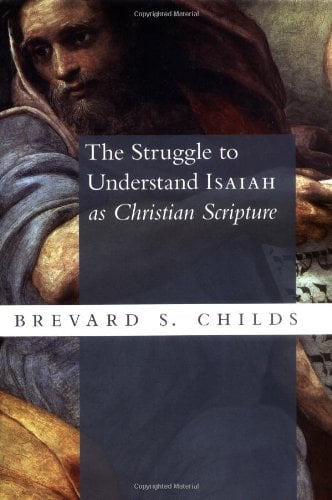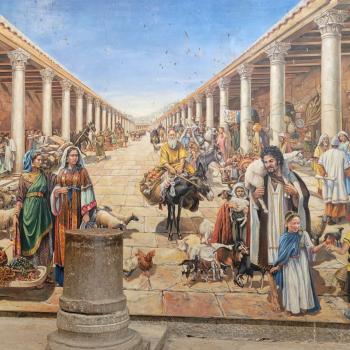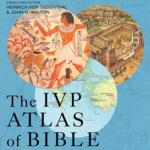It is the approach of Childs which involves both critical engagement and also empathy with the sources he examines that distinguishes his work to a real extent from that of Sawyer who is too focused on abuses of the OT. The next church father Childs gives attention to, quite rightly, is Irenaeus (130-200 A.D.), particularly because we now have to hand a version of his long lost book The Demonstration of the Apostolic Preaching. It is something of a mercy that the focus of attention of Christian writers after the middle of the second century moved from controversies with Judaism to dealing with the rising crisis of Gnosticism. Here in Irenaeus for the first we hear about a New Testament (composed apparently of four Gospels, Acts, numerous apostolic letters including Paul’s especially). Irenaeus cites this ‘new testament’ in written form as just as authoritative as the OT. Irenaeus in addition has a clear belief in a passing down of an authoritative apostolic doctrinal tradition and a perpetual succession of elders, not apostles or popes (advers. Haer. 1.3.4).
It appears to have been Irenaeus who first articulated clearly the notion of a regula fidei, a summary of apostolic faith which was central and crucial to the church’s belief system and confession. “The rule was not identical with scripture, but was that sacred apostolic tradition, both in oral and written form, that comprised the church’s story… a holistic rendering of the apostolic faith according to its proper order (Dem. 52; A.H.1.9.4;2.27.1)” Irenaeus also knows and recites an early form of ‘the Symbol’ i.e. the Apostle’s Creed (A.H. 1.10.1).
Irenaeus does indeed operate at a level of sophistication never glimpsed in Justin’s work. He has both a hermeneutic of progressive revelation and a theology of salvation history. As Childs shows, he interprets the material in the narrative of the OT starting with Genesis quite literally, but when he gets to the prophets, it is here especially that he finds the theology of God’s eternal salvific purposes, especially of course in Isaiah (Dem. 30). “Israel’s history forms an indissoluble theological unity with that of the church and is not viewed as simply a background for the real event of Christ’s incarnation.” Sometimes this leads to a ‘this is fulfilled in that’ literal approach to the OT (e.g. Is. 50.5-6 is a description of the scourging of Christ, or the promises to Abraham were fulfilled in Christ). More often typology is used— the first Adam is contrasted with the last, Eve and Mary are compared and contrasted, the tree in the garden foreshadows the cross. Irenaeus simply cites the NT as a written Scripture and the OT text he thinks is fulfilled in it to accomplish his purposes, something Justin was not truly able to do. Modern interpreters may be surprised to hear Irenaeus say that the pre-existent Christ is speaking in Is. 45.1 and 49.5ff., particularly in the former case, because Irenaeus, like Justin before him reads ‘Lord’ (kyrio) instead of Cyrus (kyro). These texts are used to justify the notion that the pre-incarnate Christ was the person involved in various OT theophanies to Abraham, Jacob, and even to Moses at the burning bush. Again, this is an interpretative move that most modern commentators, including conservative Christian ones whether Orthodox, Catholic, or Protestant, would reject as a legitimate exegesis of those texts. It is Cyrus who is indeed mentioned in Isaiah 45.
More congenial to some modern exegesis is the attempt to extrapolate from Is. 7.14-16 the theological implication not just of a virginal conception but of the true humanity of Jesus, he was born as an infant, ate food, was tangible etc.(Dem. 53) and from Is. 9.5-7 he draws the notion of the eternality of Christ and the fact that he was begotten (A.H. 3.16.1ff; 3.19.1ff). As Childs points out allegory was one of the hermeneutical tools in the tool box of all the early church exegetes, and Irenaeus was no different, for instance seeing in the ‘blood of the grape’ in Gen. 49.11 the blood of Christ Dem. 57). Here again is a place where I would say ancient exegetes rush in where modern ones fear to tread.
I would nuance things as follows— allegory, if used in the service of making some Christian theological or ethical point simply using an OT Biblical story, for example as Paul does in Gal. 4, is o.k. but not as exegesis, not as a claim that this is what that text always meant. This is rather a use of some OT Biblical material to draw out the meaning of some other Biblical theological or ethical truth that is not in fact actually discussed in the scriptural text used but does arise in some NT material somewhere.
I would not say this is an example of applying the OT text to a new situation. That would simply assume the same meaning applied to a different setting. Nor would I say this involves drawing out the latent significance of the original meaning. The original meaning of the ‘blood of the grapes’ in Genesis has nothing to do with the blood of Christ, despite the ingenuity of Irenaeus. I would say we are dealing with the mere use of Biblical images, ideas, metaphors, not even in a ‘figural’ way (see Appendix B), to aid in making other valid Biblical theological or ethical points. That’s all. And as such it should not be critiqued as bad exegesis, as it is not an attempt at exegesis any more than when John Wesley called himself a ‘brand plucked from the burning’ after his rescue as a child from the Epworth parsonage fire he thought he was properly exegeting the text of Zechariah 3.2 that generated this image.
Clearly, as Childs demonstrates, Irenaeus was a global thinker, and he does not use the OT or the nascent form of the NT in an atomistic manner usually. He believes the Scriptures present a unified story and vision of God’s salvific plan. Did he Christianize the OT? Childs prefers to say he transformed the witness of the OT by extending its witness to speak of the Good News of Christ.












